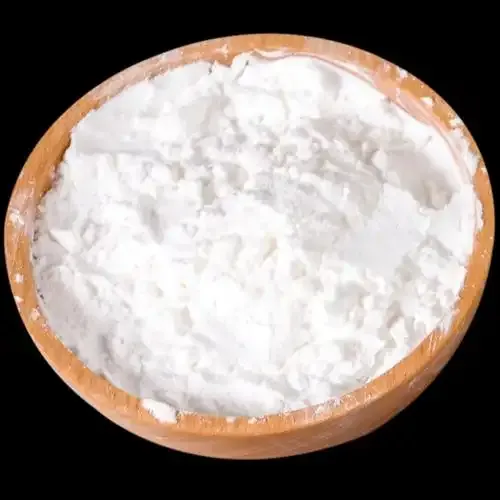
HPMC Types and Applications Across Industries
Hydroxypropyl Methylcellulose (HPMC) is one of the most versatile cellulose derivatives, widely used in construction, pharmaceuticals, food, and personal care. Understanding HPMC types, solubility properties, and specialized grades like HPMC E5, HPMC E50, และ HPMC E6 is essential for selecting the right material for specific applications.
HPMC is derived from refined cellulose through chemical modification, resulting in a water-soluble polymer with excellent film-forming, thickening, and stabilizing properties. Whether used as สารเคลือบเอนเทอริก HPMC, การเคลือบฟิล์ม HPMC, or in HPMC food products, it delivers performance benefits that make it indispensable across sectors.

1. Overview of HPMC Types and Key Grades
Different HPMC types are categorized based on viscosity, molecular weight, and substitution level. For example:
HPMC E5 – Known for its low viscosity, suitable for coating and as a binder in pharmaceutical tablets. The HPMC E5 molecular weight determines its film-forming efficiency, while HPMC E5 solubility in water ensures easy application in various formulations.
HPMC E50 – Offers higher viscosity compared to E5, used in adhesives and construction applications for better workability.
HPMC E6 – Balances viscosity and flow properties, ideal for food applications and film coatings.
In addition to viscosity, HPMC E5 viscosity and HPMC solubility chart guide formulators in selecting the best option for desired performance.
HPMC is also available in specialized versions like เอชพีเอ็มซี อะซิเตท ซักซิเนต for enteric coatings, which protect active ingredients from acidic environments in the stomach. HPMC solubility in ethanol, HPMC solubility in methanol, และ HPMC solubility in organic solvents are important for specific solvent-based systems.

2. Industrial Applications: From Construction to Food and Skincare
Construction Industry
HPMC for construction is used as a water retention agent, thickener, and binder in cement-based and gypsum-based materials. Its properties enhance workability, extend open time, and prevent sagging. Compared to HPC (Hydroxypropyl Cellulose), in HPC vs HPMC evaluations, HPMC generally provides superior thickening and adhesion in cementitious systems.
Food and Pharmaceutical Applications
In the food sector, HPMC food is recognized for its safety, stability, and non-toxic nature. It acts as a stabilizer, emulsifier, and fat replacer in low-fat foods. HPMC safety data from HPMC SDS (Safety Data Sheet) confirms its compliance with international food safety standards.
In pharmaceuticals, HPMC serves as a binder, film-former, and controlled-release agent. การเคลือบฟิล์ม HPMC ensures smooth, protective tablet finishes, while สารเคลือบเอนเทอริก HPMC allows targeted release in the intestines. Hydroxypropyl methylcellulose for skin in personal care helps moisturize and form protective films in lotions and creams.
Solubility Considerations
One of HPMC’s most valued characteristics is its solubility versatility. HPMC solubility in water is excellent at both hot and cold temperatures, but some grades offer controlled gelation. Solubility in organic solvents varies, as shown in HPMC solubility in ethanol, HPMC solubility in methanol, และ HPMC solubility in organic solvents—critical for specialized coatings and non-aqueous systems.

3. Supplier and Manufacturing Insights
Selecting the right hydroxypropyl methyl cellulose manufacturer is crucial for ensuring consistent quality. Reputable HPMC factories provide detailed technical specifications, including HPMC E5 molecular weight, viscosity charts, and SDS documentation.
HPMC que es is a common question in Spanish-speaking markets, meaning “What is HPMC?”—and the answer is that it’s a multifunctional cellulose ether with a wide range of applications.
With varying HPMC grades viscosity, manufacturers can supply products tailored for specific uses, whether in HPMC for construction, pharmaceuticals, or cosmetics.
Pricing can vary, so understanding HPMC price factors—such as viscosity grade, purity, and order quantity—is essential for procurement planning.
From HPMC E5 solubility to advanced coatings and HPMC for construction, hydroxypropyl methylcellulose remains one of the most adaptable materials in modern industry. Its varied solubility profiles, film-forming capabilities, and safety record make it indispensable in construction, pharmaceuticals, food, and personal care. By understanding HPMC types, properties, and supplier quality, businesses can optimize product performance and meet regulatory requirements efficiently.
FAQ – HPMC Types, Solubility, and Applications
What are the main HPMC types available?
HPMC types include HPMC E5, E50, E6, and specialty grades like HPMC acetate succinate. They differ in viscosity, molecular weight, and solubility, which determine their suitability for coatings, food, or construction use.
What is HPMC E5 solubility in water?
HPMC E5 has excellent solubility in both hot and cold water, allowing easy dispersion in pharmaceutical, food, and coating applications. It also exhibits gelation at certain temperatures, which can be advantageous in controlled-release formulations.
How does HPMC solubility in ethanol and methanol differ?
While HPMC is primarily water-soluble, its solubility in ethanol, methanol, and other organic solvents depends on the substitution level. Some grades dissolve partially, making them useful in solvent-based coatings.
Is HPMC safe for food applications?
Yes, HPMC foodis approved by major food safety authorities worldwide. It is non-toxic, allergen-free, and commonly used as a stabilizer, emulsifier, and fat replacer.
Who are reliable hydroxypropyl methyl cellulose manufacturers?
A good manufacturer should provide consistent quality, detailed HPMC SDSdocumentation, a full HPMC solubility chart, and various viscosity grades. Partnering with a trusted supplier ensures reliable product performance.
-
Hydroxypropyl Starch as a Sustainable Construction AdditiveNewsNov.24,2025
-
The Gelation Properties of CMCNewsNov.21,2025
-
Redispersible Latex Powder and Water Retention CapacityNewsNov.21,2025
-
Dosage Control for Polycarboxylate Water ReducerNewsNov.21,2025
-
Film-Forming Properties of Polyvinyl AlcoholNewsNov.21,2025
-
The Function of Gypsum Additives in MortarNewsNov.21,2025





















